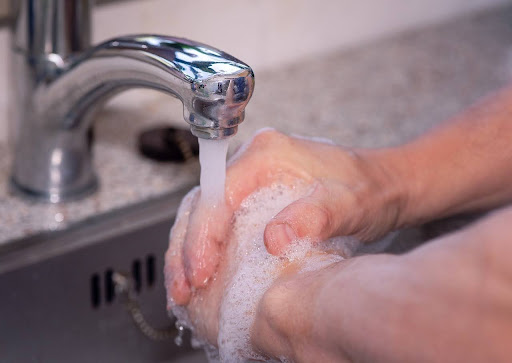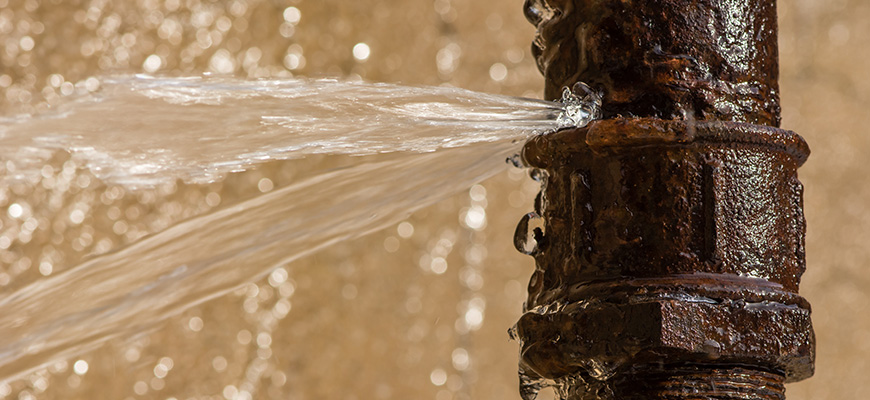Do you often find yourself unsure of how to properly dispose of cooking oil without clogging your kitchen sink? Look no further! This ultimate guide will provide you with all the information you need to handle this common kitchen dilemma effectively and hassle-free. Whether you’re a seasoned chef or just getting started in the culinary world, it’s crucial to know the proper methods for disposing of cooking oil to prevent damage to your pipes and the environment. In this comprehensive guide, we’ll walk you through step-by-step instructions on how to manage your cooking oil waste, from cooling and straining to choosing the right containers for disposal. Along the way, we’ll also highlight the dos and don’ts to ensure you avoid any potential plumbing disasters. By the end of this guide, you’ll be armed with the knowledge and confidence to safely and responsibly dispose of your cooking oil, keeping your kitchen and the planet clean and clog-free. So let’s dive in and say goodbye to clogged sinks forever!
The importance of properly disposing of cooking oil
Properly disposing of cooking oil is not only crucial for maintaining a clean and efficient kitchen but also for protecting the environment. When cooking oil is poured down the sink, it can cause significant damage to your plumbing system. The oil coats the inside of the pipes, accumulating over time and creating a sticky residue that can trap food particles and other debris, leading to clogs and blockages. Not only can this be a costly problem to fix, but it can also cause unpleasant odors and unsanitary conditions in your kitchen.
Furthermore, pouring cooking oil down the sink is harmful to the environment. When oil enters the wastewater system, it can mix with other chemicals and pollutants, contaminating water sources and causing harm to aquatic life. This pollution can have long-lasting effects on ecosystems and contribute to the degradation of our planet.
To avoid these issues, it’s essential to adopt proper practices for disposing of cooking oil. By doing so, you not only protect your own plumbing but also contribute to a cleaner and healthier environment for everyone.
The dangers of pouring cooking oil down the sink
Pouring cooking oil down the sink may seem like a convenient solution, but it can have severe consequences. As mentioned earlier, oil that goes down the drain can accumulate in the pipes, causing blockages that can be difficult and expensive to remove. Additionally, when oil mixes with other substances in the wastewater system, it can create fatbergs – large masses of solidified fat and grease that can clog entire sewer systems.
Fatbergs not only block the flow of wastewater but also emit foul odors and attract pests and vermin. The removal of fatbergs requires specialized equipment and can be a costly and time-consuming process. In some cases, fatbergs have led to sewage backups and overflows, resulting in environmental contamination and health hazards.
To prevent these issues, it’s crucial to find alternative methods for disposing of cooking oil that are both effective and environmentally friendly.
Alternatives to disposing of cooking oil
Fortunately, there are several alternatives to pouring cooking oil down the sink that are safe, convenient, and eco-friendly. By adopting these methods, you can ensure that your cooking oil waste is properly managed and doesn’t harm your plumbing or the environment.
One popular option is to use a grease trap or a grease disposal container. Grease traps are designed to separate fats, oils, and grease from wastewater, preventing them from entering the plumbing system. These traps can be installed under the sink or near the dishwasher, capturing the oil and allowing the water to flow freely. Once the trap is full, the collected grease can be easily removed and disposed of in your regular trash.
Another alternative is to solidify the cooking oil before disposal. This method involves allowing the oil to cool and solidify in a container, such as an old coffee can or a plastic tub. Once the oil has solidified, you can simply scrape it out of the container and place it in a sealed bag or wrap it in newspaper before disposing of it in the trash. This not only prevents clogs in your pipes but also ensures that the oil is contained and doesn’t leak into the environment.
Using a grease trap or grease disposal container
A grease trap or a grease disposal container can be an excellent investment for any kitchen, whether it’s a commercial establishment or a home. These devices are designed to capture and separate fats, oils, and grease from wastewater, preventing them from causing clogs and blockages in the plumbing system.
When choosing a grease trap or disposal container, it’s important to consider the size and capacity that will suit your needs. Commercial kitchens may require larger and more advanced systems, while smaller households can opt for simpler and more compact traps. It’s also essential to regularly clean and maintain the trap to ensure its proper function and effectiveness.
To use a grease trap or disposal container, simply pour the cooking oil into the designated compartment or receptacle. The trap will then separate the oil from the water, allowing the water to flow freely into the plumbing system. Once the trap is full, you can easily remove the collected grease and dispose of it in your regular trash.
Using a grease trap or disposal container not only prevents clogs and blockages but also reduces the risk of environmental pollution. These devices are specifically designed to capture and contain grease, ensuring that it doesn’t enter the wastewater system and cause harm to the environment.
Solidifying and disposing of cooking oil in the trash
Solidifying cooking oil before disposal is another effective and environmentally friendly method. This process involves allowing the oil to cool and solidify, making it easier to handle and dispose of in the trash. By solidifying the oil, you prevent it from flowing down the sink and causing clogs in your pipes.
To solidify cooking oil, start by allowing it to cool in the pan or pot you used for cooking. Once the oil has cooled down, you can transfer it to a container that’s suitable for solidifying, such as an old coffee can or a plastic tub. Make sure the container is clean and dry before pouring the oil into it.
Allow the oil to sit in the container until it solidifies completely. This may take a few hours or overnight, depending on the amount of oil and the temperature of your kitchen. Once the oil has solidified, you can easily scrape it out of the container using a spatula or a spoon.
To dispose of the solidified oil, place it in a sealed bag or wrap it in newspaper to prevent any leakage. This will ensure that the oil is contained and doesn’t come into contact with other waste in the trash. Once properly sealed, you can dispose of the oil in your regular trash bin.
It’s important to note that not all types of oil solidify in the same way. Some oils, such as olive oil and vegetable oil, tend to solidify more easily than others. However, even oils that don’t solidify completely can still be disposed of using this method. Simply allow the oil to solidify as much as possible before scraping it out and disposing of it in the trash.
Tips for preventing cooking oil clogs in the sink
While proper disposal methods are essential, it’s also important to take preventive measures to avoid cooking oil clogs in the sink. By following these tips, you can minimize the risk of clogs and keep your kitchen plumbing in top shape.
- Avoid pouring hot oil down the sink: Hot oil is more likely to flow easily through the pipes, increasing the chances of clogs. Allow the oil to cool down before disposing of it, either by solidifying it or using a grease trap.
- Strain your oil: Before disposing of cooking oil, strain it to remove any food particles or debris. This will help prevent clogs and blockages in the pipes.
- Wipe excess oil with a paper towel: If you have a small amount of oil left in the pan or pot after cooking, use a paper towel to wipe it up before washing. This will help reduce the amount of oil that goes down the drain.
- Use a sink strainer: A sink strainer can catch larger food particles and grease, preventing them from entering the pipes. Regularly clean the strainer to ensure its effectiveness.
- Dispose of oil-soaked paper towels properly: If you use paper towels to absorb excess oil, make sure to dispose of them in the trash and not down the sink. Oil-soaked paper towels can also cause clogs in the plumbing.
By following these simple tips, you can maintain a clog-free kitchen sink and avoid costly plumbing repairs.
Conclusion: The responsible way to dispose of cooking oil
Properly disposing of cooking oil is essential for maintaining a clean and efficient kitchen, as well as protecting the environment. By avoiding the temptation to pour oil down the sink and adopting alternative methods, such as using a grease trap or solidifying the oil before disposal, you can prevent clogs and blockages in your plumbing system. Additionally, following preventive measures, like straining the oil and wiping excess oil with a paper towel, can further reduce the risk of clogs and keep your kitchen plumbing in top shape.
Remember, the responsible way to dispose of cooking oil is not only beneficial for your own kitchen but also for the planet. By taking the extra step to properly manage your cooking oil waste, you contribute to a cleaner and healthier environment for everyone. So the next time you’re faced with the question of how to dispose of cooking oil, refer back to this ultimate guide and say goodbye to clogged sinks forever!


